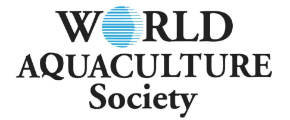ECONOMIC EFFICIENCY OF FISH FARMING TECHNIQUES IN NIGERIA: ARE FARMERS REALLY EFFICIENT?
The study examined the efficiency of various fish farming techniques employed by 590 fish farmers in Nigeria with particular reference to production systems, rearing methods, and water retention capacity. It specifically identified the typology of fish farming and the economic efficiency of various techniques using stochastic frontier production to determine the efficiency of fish farmer in resources use.
Estimation of the stochastic frontier production functions on the most profitable techniques showed that the mean technical efficiency level was 98.0 % for flow through system (FTS) and water recirculatory with tc = 4.441 indicating significant, while it was 85.1 % for earthen pond water. Allocative efficiencies were 0.43 for FTS while water recirculatory systems were 0.46 for Nigeria type and 0.55 for Dutch system. Allocative efficiency in earthen pond was 1.0. Figures obtained for the mean economic efficiency were 0.91; 0.43; 0.46 and 0.55 for earthen pond, FTS, and water recirculatory for Nigeria and Dutch systems respectively. Based on profitability criterion only, for water exchange capacity, flow technique (10.6) was better than stagnant; on rearing techniques, plastic tank (6.2) was the best; on culture systems, water recirculatory (7.12) had the highest; on types of fish feed, floating feed (6.13) was better than local. The study revealed that farmers were technically sound in input combination but the high cost of fish feed, quality of fish seed, energy, enabling and marketing were identified as barrier to the sustainable growth of aquaculture in Nigeria.
Aquaculture is the fastest growing food production sector in the world, with an annual growth rate of 8%, and currently supplies 50% of total fish and shellfish for human consumption. Demand and price for aquatic products are projected to continue rise. With an annual production of ~300,000 metric tonnes (FDF, 2015), the Nigerian aquaculture industry is relatively small by global standards - but this not need to be. Investment in R&D that addresses the technological bottlenecks to production - including new species- husbandry and reducing the sector's environmental footprint. This would improve Nigeria's reputation and services for aquaculture technology and respond to the increasing global demand for high quality seafood.













